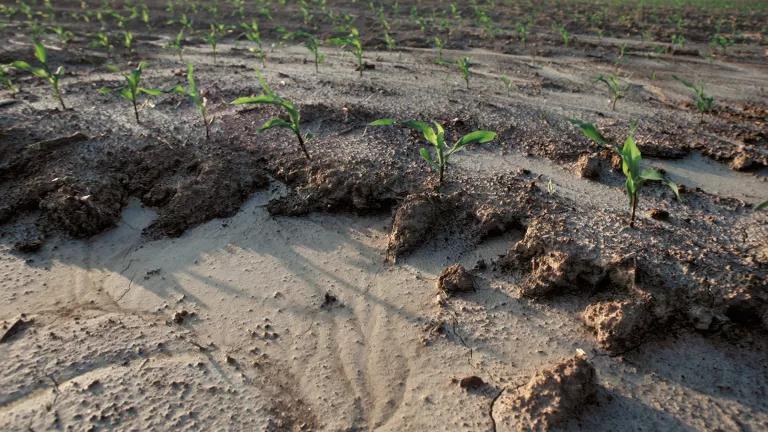Source: https://www.downtoearth.org.in/news/climate-change/black-soil-in-red-climate-change-threatens-world-s-food-basket-86392
FAO report finds most black soils moderate to severely eroded due to land-use change, unsustainable practices
By Shagun
Published: Tuesday 06 December 2022

![]() The inherent fertility of black soils make them the food basket for many countries. Photo: Wikimedia Commons
The inherent fertility of black soils make them the food basket for many countries. Photo: Wikimedia Commons
Black soils, which feed the global population, are under threat, with most losing at least half of their soil organic carbon (SOC) stocks, according to a new United Nations report. The inherent fertility of the soils make them the food basket for many countries and are considered essential to the global food supply.
Land-use change, unsustainable management practices and excessive use of agrochemicals are to blame, found the Food and Agriculture Organization (FAO). Global status of black soils is the first such report, released on the occasion of World Soil Day, December 5, 2022.
These soils are characterised by a thick, dark-coloured soil horizon rich in organic matter. Most of the black soils suffered from moderate to severe erosion processes, as well as nutrient imbalances, acidification and biodiversity loss, the report said.
Black soils are extremely fertile and can produce high agricultural yields thanks to their elevated moisture storage capacity. They constitutes 5.6 per cent of global soils and contain 8.2 per cent of the world’s SOC stocks: Approximately 56 billion tonnes of carbon.
This signifies their importance for climate change mitigation and adaptation. The ability of the soils to remove carbon from the atmosphere and lock it up in soil organic matter (called carbon sequestration) has been proposed as an important solution to mitigate human-induced climate change.
However, black soils are quickly losing their SOC stocks. They have lost 20 to 50 per cent of their original SOC stock, with the carbon being released into the atmosphere mostly as carbon dioxide, exacerbating global warming, the report pointed out while quoting previous studies.
Black soils have the potential to provide 10 per cent of the total SOC sequestration globally if they receive proper attention. Europe and Eurasia have the highest potential at over 65 per cent and Latin America and the Caribbean at around 10 per cent, according to FAO’s global Soil Organic Carbon Sequestration Potential map.
Black soils were home to 2.86 per cent of the global population and had 17.36 per cent of cropland, 8.05 per cent of global SOC stock and 30.06 per cent SOC stock of global cropland, according to the report.
However, despite representing a small portion of the world’s soils, black soils were key for food security and the global economy. Globally in 2010, 66 per cent of sunflower seeds, 51 per cent of small millet, 42 per cent of sugar beet, 30 per cent of wheat and 26 per cent of potatoes were harvested from black soils.
The distribution of black soil areas used as croplands varied in each region. Europe and Eurasia accounted for 70 per cent of the soil in the total cropland, while North America, Latin America and the Caribbean and Asia had 10 per cent each.
Preserving natural vegetation on black soils such as grasslands, forests and wetlands and adopting sustainable soil management approaches on cropped black soils were the two main goals highlighted by the report.
It also put forward tailored recommendations for farmers, national governments, research and academia and the global platform International Network of Black Soils.
